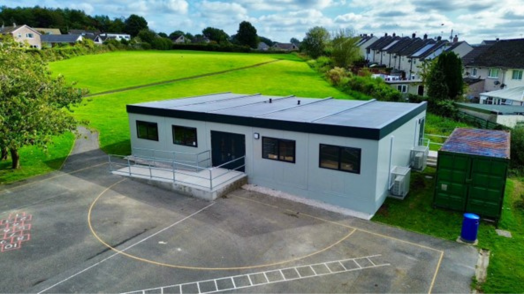Contact our friendly team for more information on our full range of buildings and how to start the process of hiring or buying a modular building for your business. Our expert team is always available to give advice, guidance or support.
Published: 22 July 2022 in Industry News
Health-Based Modular Buildings Benefitting the Community

There are many advantages to modular buildings in the healthcare sector, whilst they have been used commonly throughout the Covid-19 pandemic, there are many more uses. Modular buildings enable the NHS to meet spikes in demand by offering time-effective solutions and cost-efficient facilities that also support sustainability efforts by offering buildings that are flexible.
Added Capacity
When waiting times increase or additional services are required a modular building can add much-needed space. With demand for hospital treatment outstripping capacity even before COVID-19, it is no surprise that the demands of delivering care during a pandemic have led to significant backlogs and longer waits for patients.
The backlog in secondary care consists of the care that the NHS would normally have delivered but which was disrupted as COVID-19 impacted service delivery. This includes:
- Patients on a waiting list for treatment who would ordinarily have been seen by now
- Patients who have not yet presented to their GP to seek a referral for symptoms due to concerns of burdening the health service or fears around COVID-19 infection
- Patients who have had procedures cancelled
- Patients who have had referrals delayed or cancelled
- Patients who have had referrals refused due to a lack of capacity
It will take years to clear the backlog. The ongoing need for stringent infection prevention control measures and workforce shortages mean it will take even longer to work through as demand continues to rise.
The latest figures for May 2022 show:
- A record of over 6.6 million people waiting for treatment
- 2.41 million patients waiting over 18 weeks for treatment
- 331,623 patients waiting over one year for treatment – 13 times the number waiting over a year in May 2020
- A median waiting time for treatment of 12.7 weeks – significantly higher than the pre-Covid duration
The combination of ongoing pressure on services, the backlog of care and workforce shortages means waiting times have increased to record highs. The number of patients waiting over 12 hours from decision to admit to admission increased to 22,034 in June 2022 up from 19,053 in the previous month. This is 48 times the amount waiting this long pre-pandemic in May 2019.
The number of GP referrals to outpatient services that have been unsuccessful because there are no slots available has jumped from 238,859 in February 2020 to 401,115 in November 2021 (an 87% increase).
When GPs are unable to refer to hospital services, these patients need to be cared for by GPs while they wait for hospital treatment, adding to the pressure in primary care.
With numbers like these, it’s clear to see how adding capacity can only be a good thing.
Community Healthcare
In some communities, modular buildings are being used as outpatient centres and can be used for a few departments due to the flexibility of both buildings and facilities.
One concept being implemented widely is the separation of urgent accident and emergency cases from patients with less serious injuries or ailments to improve patient flow.
Sustainability
Offsite manufacturing is constantly improving, however adding green facilities which use renewable energy, can also help to reduce the carbon footprint of offsite manufacturing.
Similarly, modular construction offers construction and resource efficiency. The design of these buildings also provides the opportunity to improve the environmental impact through material selection. Offsite construction also allows for maximising materials by using ‘waste’ in future projects and recycling where possible.
Flexibility
Modular units can be constructed to blend in with the external aesthetics of an existing structure or built to stand out. Units can also be rapidly and effectively disassembled, and relocated for new use, lowering the demand for new materials, and reducing the energy consumed.
There are numerous areas where modular buildings are being used in healthcare facilities, including:
- Exam rooms
- HVAC
- Perioperative spaces
- Holding bays
- Fire protection
- Plumbing
- Bathrooms
- Patient-unit overhead utilities
- Headwalls
- Hospital patient rooms
Modular construction ensures a higher-quality product by following a standardised process rather than traditional construction. Despite the improved quality, modular construction is generally less expensive. Labour can be made more efficient with factory-based tools and equipment, further contributing to cost savings.
For help with your healthcare project contact Springfield today, one of our project managers can discuss your requirements and options. From there, the project manager will help with your journey to completion, ensuring that you are happy at every step of the way.









